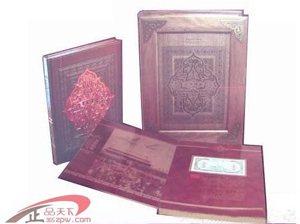China's banknote king
China's banknote collection has emerged as a significant trend, with prices frequently reaching new highs. Among these, the rarities of the first three sets of Renminbi (RMB) and their connected banknotes have become the "darlings" pursued by collectors. The country's first formally publicly issued publication, "The King of Chinese Banknotes," officially contains all coins that are legally recognized by national banks as collectible investment items.
"The King of Chinese Banknotes" includes two liberation area tickets, one banknote from the first set of RMB, five from the second set, ten from the third set, and three sets of limited-edition four-connected jiao coins issued by the People's Bank of China. It also includes three sets of one, two, and five yuan four-connected notes and a special edition Macao four-connected note issued by the Bank of China and Banco Nacional Ultramarino, known as the "King of Serial Numbers." In total, it comprises eleven types of coins and fifty-one individual banknotes, worthy of being passed down through generations for enthusiasts to cherish.
The issuance of the first set of RMB ensured the needs of the victorious advance during the Liberation War, promoted economic recovery and development, and ultimately became the unified national currency, ending the decades-long混乱currency system under the Nationalist rule. Since its circulation ceased in 1955, the first set of RMB has become highly valuable for collectors. Currently, a complete set of the first set of RMB can be worth up to 3 million yuan. Due to its extremely high value, this type of coin is randomly allocated in such collections. The third set of RMB stands out due to its clear main theme, innovative design style, reasonable denomination structure, full range of main and subsidiary coins, advanced printing technology, and strong anti-counterfeiting features, writing a brilliant chapter in the history of China's currency. From a collection perspective, it is considered the most promising and potential set of RMB. This collection includes four one-jiao notes, two each of two-jiao, five-jiao, and one-yuan notes, and one each of five-yuan and ten-yuan notes.
The one, two, and five jiao four-connected notes from the fourth set of RMB represent the first and last set of connected jiao paper money issued in China. Currently, banks only accept but do not exchange the fourth set of RMB. Once the central bank officially announces the withdrawal of the fourth set from circulation, these rare connected notes will undoubtedly reveal their astonishing value potential. The "Macao 10 Yuan Double Error Whole Sheet Note" is currently the first whole sheet note issued under legal authorization. Authorized by Administrative Regulation No. 33/2000 of the Macao Special Administrative Region, it was issued under legal authorization, possessing unparalleled authority and seriousness. The Macao 10 Yuan Double Error Whole Sheet Note is the first whole connected note issued by the Bank of China. To date, the Bank of China has issued only foreign exchange certificates, Macao pataca, and Hong Kong dollars. Among these, the Macao whole sheet note is the first whole connected note issued by the Bank of China, making it particularly commemorative and collectible.
"The King of Chinese Banknotes" encompasses four absolute rarities, pioneering a new form of investment and financial management: the rarest liberation area currency, the rarest first, second, and third sets of RMB, the rarest four-connected notes with limited existence, and the renowned "Macau Double Error Connected Note," hailed as "China's First Rare Banknote."
Each coin is an absolute rarity, every piece precious, all issued by national banks and supervised by the Chinese Cultural Relics Society. Such an excellent investment opportunity should not be missed.
